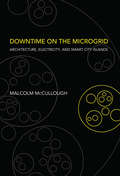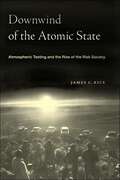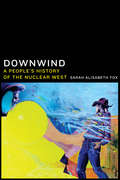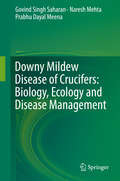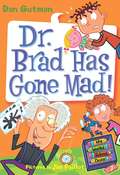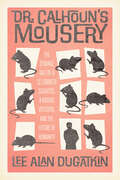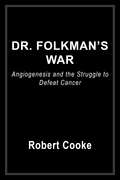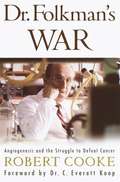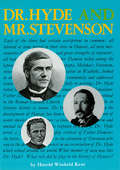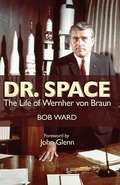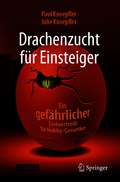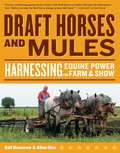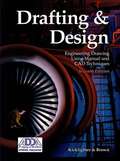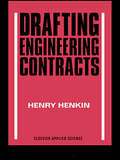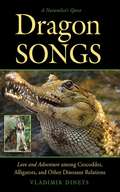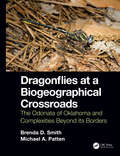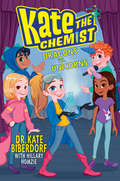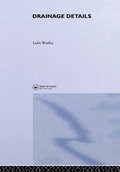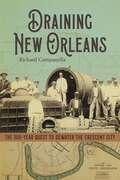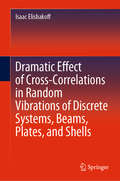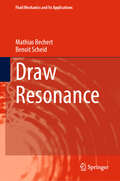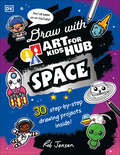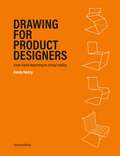- Table View
- List View
Downtime on the Microgrid: Architecture, Electricity, and Smart City Islands (Infrastructures)
by Malcolm McCulloughSomething good about the smart city: a human-centered account of why the future of electricity is local.Resilience now matters most, and most resilience is local—even for that most universal, foundational modern resource: the electric power grid. Today that technological marvel is changing more rapidly than it has for a lifetime, and in our new grid awareness, community microgrids have become a fascinating catalyst for cultural value change. In Downtime on the Microgrid, Malcolm McCullough offers a thoughtful counterpoint to the cascade of white papers on smart clean infrastructure. Writing from an experiential perspective, McCullough avoids the usual smart city futurism, technological solutionism, policy acronyms, green idealism, critical theory jargon, and doomsday prepping to provide new cultural context for a subject long a favorite theme in science and technology studies. McCullough describes the three eras of North American electrification: innovation, consolidation, and decentralization. He considers the microgrid boom and its relevance to the built environment as “architecture's grid edge.” Finally, he argues that resilience arises from clusters; although a microgrid is often described as an island, future resilience will require archipelagos—clusters of microgrids, with a two-way, intermittent connectiveness that is very different from the always-on, top-down technofuture we may be expecting. With Downtime on the Microgrid, McCullough rises above techno-hype to find something good about the smart city and reassuring about local resilience.
Downwind of the Atomic State: Atmospheric Testing and the Rise of the Risk Society
by James C. Rice2024 Outstanding Academic Title, given by Choice ReviewsHow the scientific community overlooked, ignored, and denied the catastrophic fallout of decades of nuclear testing in the American WestIn December of 1950, President Harry Truman gave authorization for the Atomic Energy Commission to conduct weapons tests and experiments on a section of a Nevada gunnery range. Over the next eleven years, more than a hundred detonations were conducted at the Nevada Test Site, and radioactive debris dispersed across the communities just downwind and through much of the country. In this important work, James C. Rice tells the hidden story of nuclear weapons testing and the negligence of the US government in protecting public health.Downwind of the Atomic State focuses on the key decisions and events shaping the Commission’s mismanagement of radiological contamination in the region, specifically on how the risks of fallout were defined and redefined, or, importantly, not defined at all, owing to organizational mistakes and the impetus to keep atomic testing going at all costs. Rice shows that although Atomic Energy Commission officials understood open-air detonations injected radioactive debris into the atmosphere, they did not understand, or seem to care, that the radioactivity would irrevocably contaminate these communities.The history of the atomic Southwest should be a wake-up call to everyone living in a world replete with large, complex organizations managing risky technological systems. The legacy of open-air detonations in Nevada pushes us to ask about the kinds of risks we are unwittingly living under today. What risks are we being exposed to by large organizations under the guise of security and science?
Downwind: A People's History of the Nuclear West
by Sarah Alisabeth FoxDownwind is an unflinching tale of the atomic West that reveals the intentional disregard for the inhabitants and the environment in nuclear testing by the federal government and in uranium extraction by mining corporations during and after the Cold War. Sarah Alisabeth Fox interviews residents of the Great Basin region effected by environmental contamination from the uranium industry and nuclear testing fallout. Those residents tell tales of communities ravaged by cancer epidemics, farmers and ranchers economically ruined by massive crop and animal deaths, and Native miners working in dangerous conditions without proper safety equipment so that the government could surreptitiously study the effects of radiation on humans. In chilling detail, Downwind brings to light the stories and concerns of these groups whose voices have been silenced and marginalized for decades in the name of “patriotism” and “national security.” With the renewed boom in mining in the American West, Fox’s look at this hidden history, unearthed from years of field interviews, archival research, and epidemiological studies, is a must-read for every American concerned about the fate of our western lands and communities.
Downy Mildew Disease of Crucifers: Biology, Ecology and Disease Management
by Govind Singh Saharan Naresh Mehta Prabhu Dayal MeenaThe book reviews key developments in downy mildew research, including the disease, its distribution, symptomatology, host range, yield losses, and disease assessment; the pathogen, its taxonomy, morphology, phylogeny, variability, sporulation, survival and perpetuation, spore germination, infection, pathogenesis, seed infection, disease cycle, epidemiology, forecasting, and fine structures. The book also elaborates the mechanisms of host resistance (biochemical, histological, genetic, and molecular, including cloning and the mapping of R-genes), disease resistance breeding strategies, and the genetics of host-parasite interactions. It explores disease management based on cultural, chemical, biological, host resistance, and integrated approaches; and provides suggestions for future research areas. This book offers a comprehensive guide to an economically important disease, reviewing in detail the extant body of literature. Divided into 16 chapters, each of which includes a wealth of photographs, graphs, histograms, tables, figures, flow charts, micrographs etc., it represents an invaluable source of information for all researchers, teachers, students, industrialists, farmers, policymakers, and all others who are interested in growing healthy and profitable cruciferous crops all over the world.
Dr. Brad Has Gone Mad! (My Weird School Daze #7)
by Dan Gutman Jim PaillotThe weirdness never stops! Ella Mentry School's counselor wants everybody to stop arguing and get along with one another. He wants everybody to be polite! He wants everybody to live in peace and harmony! What is his problem? Now the boys have to play with dolls! The girls have to play with action figures! And that's only the start of Dr. Brad's weird methods. . . .
Dr. Calhoun's Mousery: The Strange Tale of a Celebrated Scientist, a Rodent Dystopia, and the Future of Humanity
by Lee Alan Dugatkin“Brilliant. . . . An absorbing read and a potent lesson in moral behavior—both of rodents and of humans.”—Deborah Blum, Pulitzer Prize–winning author of The Poison Squad • “A fascinating read about an immensely influential scientist.”—Robert M. Sapolsky, author of the New York Times–bestseller Determined • “Stimulating scientific history. . . . Colorful accounts. . . . This fascinates.”—Publishers Weekly A bizarre and compelling biography of a scientist and his work, using rodent cities to question the potential catastrophes of human overpopulation. It was the strangest of experiments. What began as a utopian environment, where mice had sumptuous accommodations, had all the food and water they could want, and were free from disease and predators, turned into a mouse hell. Science writer and animal behaviorist Lee Alan Dugatkin introduces readers to the peculiar work of rodent researcher John Bumpass Calhoun. In this enthralling tale, Dugatkin shows how an ecologist-turned-psychologist-turned-futurist became a science rock star embedded in the culture of the 1960s and 1970s. As interest grew in his rodent cities, Calhoun was courted by city planners and his work was reflected in everything from Tom Wolfe’s hard-hitting writing to the children’s book Mrs. Frisby and the Rats of NIMH. He was invited to meetings with the Royal Society and the pope and taken seriously when he proposed a worldwide cybernetic brain—a decade before others made the internet a reality. Readers see how Calhoun’s experiments—rodent apartment complexes like “Mouse Universe 25”—led to his concept of “behavioral sinks” with real effects on public policy discussions. Overpopulation in Calhoun’s mouse (and rat) complexes led to the loss of sex drive, the absence of maternal care, and a class of automatons that included “the beautiful ones,” who spent their time grooming themselves while shunning socialization. Calhoun—and those who followed his work—saw the collapse of this mouse population as a harbinger of the ill effects of an overpopulated human world. Drawing on previously unpublished archival research and interviews with Calhoun’s family and former colleagues, Dugatkin offers a riveting account of an intriguing scientific figure. Considering Dr. Calhoun’s experiments, he explores the changing nature of scientific research and delves into what the study of animal behavior can teach us about ourselves.
Dr. Folkman's War
by Robert Cooke C. Everett KoopIn 1961, twenty-eight-year-old Dr. Judah Folkman saw something while doing medical research in a United States navy lab that gave him the first glimmering of a wild, inspired hunch. What if cancerous tumors, in order to expand, needed to trigger the growth of new blood vessels to feed themselves? And if that was true, what if a way could be found to stop that growth? Could cancers be starved to death? Dr. Folkman had ample reason to be self confident - second in his class at Harvard Medical School, he was already considered one of the most promising doctors of his generation. But even he never guessed that his idea would eventually grow into a multibillion-dollar industry that is now racing through human trials with drugs that show unparalleled promise of being able to control cancer, as well as other deadly diseases.For the creation of this book, Dr. Judah Folkman cooperated fully and exclusively with acclaimed science writer Robert Cooke. He granted Cooke unlimited interviews, showed him diaries and personal papers, and threw open the doors of his lab. The result is an astonishingly rich and candid chronicle of one of the most significant medical discoveries of our time and of the man whose vision and persistence almost single-handedly has made it possible.Dr. Folkman's radical new way of thinking about cancer was once considered preposterous. So little was known about how cancer spreads and how blood vessels grow that he wasn't even taken seriously enough to be considered a heretic. Other doctors shook their heads at the waste of a great mind, and ambitious young medical researchers were told that accepting a position in Folkman's lab would be the death of their careers. Now, though, the overwhelming majority of experts believes that the day will soon come when antiangiogenesis therapy supplants the current more toxic and less-effective treatments - chemotherapy, radiation, and surgery-as the preferred method of treatment for cancer in patients around the world, and Dr. Folkman's breakthrough will come to be taken for granted the way we now take for granted the polio vaccine and antibiotics.REVIEWSDr. Folkman's War brilliantly describes how high the odds are against success in medical research, how vicious the competition for grants, how entrenched the skepticism about any genuinely original thinking, how polluted by politics and commerce the process of getting medicine into patients' hands. But it also depicts with rare power how exalted a calling medicine can be and how for the rare few-the brilliant, the tireless, and the lucky - the results of success can be world-changing."Judah Folkman's answer-stop cancers by cutting off their blood supplies-has much too long been thought of as too simple to ever work. Now, however, a broad set of antiangiogenic agents based on Judah's ideas are coming on line. The verdict 'cancer' need no longer be synonymous with fear and despair. Our country's 'war against cancer' at last has found its general."-JAMES D. WATSON, winner of the Nobel Prize and author of The Double Helix"It is said that genius disdains the beaten path, and that's certainly true of Dr. Judah Folkman. He has suffered for it, but his imagination, his persistence-and yes, his glorious obsession-will benefit us all. We owe him our boundless gratitude."-JONATHAN HARR, author of A Civil Action"Rarely in the history of modem biomedical research has a major advance been attributable directly to the energies and vision of a single individual. This is such a story, about one man's vision, drive, indeed obsession with an idea that will one day dramatically change cancer therapy."-ROBERT A. WEINBERG, Whitehead Institute for Biomedical Research and MIT, author of One Renegade Cell: How Cancer Begins and Racing to the Beginning of the Road: The Search for the Origin of Cancer"I first encountered Judah Folkman when I was a surgical intern at Boston City Hospital. His already legendary crisp intellect provided a logical scaffold for my understanding of complex diseases. Judah, full of warmth and humanity, inspired me and gen...
Dr. Folkman's War: Angiogenesis and the Struggle to Defeat Cancer
by Robert CookeIn 1961, twenty-eight-year-old Dr. Judah Folkman saw something while doing medical research in a United States navy lab that gave him the first glimmering of a wild, inspired hunch. What if cancerous tumors, in order to expand, needed to trigger the growth of new blood vessels to feed themselves? And if that was true, what if a way could be found to stop that growth? Could cancers be starved to death? Dr. Folkman had ample reason to be self confident -- second in his class at Harvard Medical School, he was already considered one of the most promising doctors of his generation. But even he never guessed that his idea would eventually grow into a multibillion-dollar industry that is now racing through human trials with drugs that show unparalleled promise of being able to control cancer, as well as other deadly diseases. For the creation of this book, Dr. Judah Folkman cooperated fully and exclusively with acclaimed science writer Robert Cooke. He granted Cooke unlimited interviews, showed him diaries and personal papers, and threw open the doors of his lab. The result is an astonishingly rich and candid chronicle of one of the most significant medical discoveries of our time and of the man whose vision and persistence almost single-handedly has made it possible. Dr. Folkman's radical new way of thinking about cancer was once considered preposterous. So little was known about how cancer spreads and how blood vessels grow that he wasn't even taken seriously enough to be considered a heretic. Other doctors shook their heads at the waste of a great mind, and ambitious young medical researchers were told that accepting a position in Folkman's lab would be the death of their careers. Now, though, the overwhelming majority of experts believes that the day will soon come when antiangiogenesis therapy supplants the current more toxic and less-effective treatments -- chemotherapy, radiation, and surgery-as the preferred method of treatment for cancer in patients around the world, and Dr. Folkman's breakthrough will come to be taken for granted the way we now take for granted the polio vaccine and antibiotics. Dr. Folkman's War brilliantly describes how high the odds are against success in medical research, how vicious the competition for grants, how entrenched the skepticism about any genuinely original thinking, how polluted by politics and commerce the process of getting medicine into patients' hands. But it also depicts with rare power how exalted a calling medicine can be and how for the rare few--the brilliant, the tireless, and the lucky -- the results of success can be world-changing. From the Hardcover edition.
Dr. Hyde and Mr. Stevenson
by Harold Winfield KentDr. Hyde and Mr. Stevenson: the life of the Rev. Dr. Charles McEwen Hyde, including a discussion of the open letter of Robert Louis Stevenson.
Dr. Space
by Bob WardWritten by veteran aerospace journalist Bob Ward, who spent years investigating his subject, this biography presents a revealing but even-handed portrait of the father of modern rocketry. As he chronicles Wernher von Braun's life, Ward explodes many myths and misconceptions about the controversial genius who was a hero to some, a villain to others. The picture of von Braun that emerges is of a brilliant scientist with limitless curiosity and a drive to achieve his goals at almost any price from, developing the world's first ballistic missile used against the Allies in World War II to helping launch the first U.S. satellite that hurled Americans into space and the Saturn V super-booster that powered them to the moon. Along the way readers are introduced to the human side of this charismatic visionary who brought the United States into the Space Age.
Drachenzucht für Einsteiger: Ein "gefährlicher" Zeitvertreib für Hobby-Genetiker
by Paul Knoepfler Julie KnoepflerKann man einen Drachen züchten? Kann er dann Feuer spucken und fliegen? Können wir ihm eine eindrucksvolle Größe verleihen? Wie schlau sollen wir unseren Drachen machen, und können wir ihn trainieren? Wie wahrscheinlich ist es, dass wir bei unserem Versuch, einen Drachen zu bauen, umkommen? Und geht das auch mit Einhörnern?Die Welt begeistert sich seit Jahrhunderten für Drachen und sie haben noch immer einen festen Platz in der Popkultur wie Smaug in „Der kleine Hobbit“ und die Drachen in „Game of Thrones“. Die Leute lieben Drachen und sind neugierig zu erfahren, ob man tatsächlich einen Drachen erschaffen kann. In diesem ungewöhnlichen Buch geht es darum, wie wir mit den allerneuesten wissenschaftlichen Techniken theoretisch einen Drachen erschaffen könnten. Dabei behandeln wir modernste wissenschaftliche Themen wie CRISPR, Biohacking, Stammzellenforschung und Bioengineering. Das Buch steckt voller Fakten, doch der Humor kommt nicht zu kurz, und es regt Leser*innen überdies an, sich Gedanken über den Einfluss von Wissenschaft und Technik auf unsere Gesellschaft zu machen. Unterwegs wirft das Buch einen satirischen Blick auf die Wissenschaft an vorderster Front, die oft in den Medien maßlos gehypt wird. Es diskutiert Schlüsseltechnologien, die ins Spiel kommen, wenn wir uns vorstellen, unsere Idee, einen Drachen zu bauen, in feuerspuckende Realität umzusetzen. Während wir all diese Themen diskutieren, sprechen wir auch über die ethischen Probleme, die sich beim „Bau“ eines Drachens ergeben, und die Möglichkeiten, einen ähnlichen Ansatz zu nutzen, um andere mythische Wesen, wie z.B. ein Einhorn, zu erschaffen. Dieses Buch, das jeden ansprechen sollte, enthält viele eindrucksvolle Illustrationen und andere interessante Abbildungen, darunter Drachendarstellungen, Bilder von Flugsaurierskeletten und vieles mehr.
Draft Horses and Mules: Harnessing Equine Power for Farm & Show
by Gail Damerow Alina RiceHardworking and intelligent, draft horses and mules provide clean-energy power for an impressive array of tasks. Bringing strength and endurance to every job, from cultivating farmland and hauling logs to giving long quiet rides through the countryside, these animals love to work. In this illustrated guide, Gail Damerow and Anita Rice provide all the information you need in order to select, train, feed, care for, and work with your own team of draft horses or mules.
Drafting & Design: Engineering Drawing Using Manual and CAD Techniques
by Clois E. Kicklighter Walter C. BrownNIMAC-sourced textbook
Drafting Engineering Contracts
by H HenkinThis E. & F. N. Spon title is now distributed by Routledge in the US and Canada This title available in eBook format. Click here for more information.Visit our eBookstore at: www.ebookstore.tandf.co.uk.
Drafting Fundamentals for the Entertainment Classroom: A Process-Based Introduction Integrating Hand Drafting, Vectorworks, and SketchUp
by Eric AppletonDrafting Fundamentals for the Entertainment Classroom: A Process-Based Introduction to Hand Drafting, Vectorworks, and SketchUp guides students through a syllabus-formatted semester of integrated drafting concepts and skills. This book links beginner visualization practices with fundamental software knowledge through step-by-step exercises and examples. By presenting hand drafting and Vectorworks through incremental exercises, students not only gain an understanding of the tools used in drafting but also learn why the tools, practices, and standards exist in the first place. SketchUp, a user-friendly 3D modeling program, is integrated into the various exercises to help readers visualize concepts and begin modeling their own ideas. By the end of the book, students will understand drawing construction techniques, United States Institute for Theatre Technology (USITT)-recommended graphic standards, and the typical drawings created for entertainment design, preparing them to dive more deeply into the further complexities and opportunities of Vectorworks and SketchUp. Drafting Fundamentals for the Entertainment Classroom is written to complement a 14- or 15-week semester of an Entertainment Drafting course. The book’s format also provides structure for independent and self-directed study.
Dragon Songs: Love and Adventure among Crocodiles, Alligators, and Other Dinosaur Relations
by Vladimir DinetsA born naturalist and a fearless traveler, Vladimir Dinets wrote travel guides, conducted field research, and lived a couple of lives before he was accepted into the PhD program in zoology at the University of Miami. He thought crocodiles were a dead-end research topic--survivors from the age of the dinosaurs but not much else--until he witnessed groups of up to seventy alligators performing mating choruses that included infrasound vibrations--a form of communication extremely rare in nature--and a "dance" unknown in the scientific literature but that resembled a scene from Jurassic Park. To prove his thesis about the language of crocodiles, he spent the next six years traveling around the world on shoestring budgets and in extreme circumstances, studying almost every living species. At the same time, as a man desiring companionship in life, he sought love.With adventures on five continents, Dragon Songs is his account of this quest. It includes an escape from a boiling lava lake in the Afar Desert, being chased up a tree by a tiger in India, hitching a ride with a cocaine smuggler in Bolivia, and diving with giant Greenland sharks--all in the name of studying crocodiles, among which he routinely paddled in his inflatable kayak. Of course, not everything went according to plan. But, in the end, his ground-breaking research helped change the field. And during the course of his adventures, he met and courted his future wife.
Dragonflies at a Biogeographical Crossroads: The Odonata of Oklahoma and Complexities Beyond Its Borders
by Brenda D. Smith Michael A. PattenThis lavishly illustrated book examines the distribution, ecology, conservation status, and biogeography of 176 species of dragonflies in the southern plains of the United States, where twelve ecoregions converge. The topics discussed, such as phenotypic variation and ecology, are applicable and of interest across the United States and much of north America, and will appeal to researchers and dragonfly enthusiasts alike. A series of maps, including a distributional map by specific locality of occurrence, indicate level of documentation and allow the reader to visualize the biogeographical associations of a given species. These maps also encourage citizen scientists to contribute documentation wherever they spend time in the field. Context-driven chapters, including one on the region’s rich paleontological history, blend environmental history and biogeography, giving the book a fresh perspective on the natural world while providing a rich summary of the odonates. Dragonflies at a Biographical Crossroads: The Odonata of Oklahoma and Complexities Beyond Its Borders will be sought out by dragonfly researchers and enthusiasts, entomologists, amateur naturalists, paleontologists, conservation biologists, educators, regional historians, and those seeking to meld the disciplines of cultural and environmental history with biology. It will also be readily accessible to the lay public. Dragonflies combine the visually stunning with acrobatic fireworks in ways no other insect can hope to combine.
Dragonfly: NASA and the Crisis Aboard MIR
by Bryan BurroughBased on released NASA documents and interviews
Dragons vs. Unicorns (Kate the Chemist)
by Kate BiberdorfScience explosions! Theater! Mystery! Friendship! Fifth grader Kate the Chemist uses STEM knowledge to do incredible things! Kate the Chemist is a ten-year-old science problem solver. There's no problem Kate can't fix! When her best friend, Birdie, is cast as the lead unicorn in their school's musical Dragons vs. Unicorns, and Kate is chosen to be the assistant director, they agree this is going to be the best musical EVER! Kate is a natural assistant director; like all good scientists, she's smart and organized, but she also comes up with great ideas. But when everything starts going wrong with the musical and Kate realizes someone is sabotaging the show, will her special science sleuthing skills help save the day--and the show?Help young Kate the Chemist as she solves science problems in her community, starting with the school musical: Dragons vs. Unicorns!Praise for Kate the Chemist: Dragons vs. Unicorns:"Proves that science and fun go together like molecules in a polymer."--School Library Journal
Drainage Details
by L. WoolleyA unique set of 45 information sheets giving complete details of all forms of drainage work for the builder and surveyor.
Draining New Orleans: The 300-Year Quest to Dewater the Crescent City
by Richard CampanellaIn Draining New Orleans, the first full-length book devoted to “the world’s toughest drainage problem,” renowned geographer Richard Campanella recounts the epic challenges and ingenious efforts to dewater the Crescent City. With forays into geography, public health, engineering, architecture, politics, sociology, race relations, and disaster response, he chronicles the herculean attempts to “reclaim” the city’s swamps and marshes and install subsurface drainage for massive urban expansion.The study begins with a vivid description of a festive event on Mardi Gras weekend 1915, which attracted an entourage of elite New Orleanians to the edge of Bayou Barataria to witness the christening of giant water pumps. President Woodrow Wilson, connected via phoneline from the White House, planned to activate the station with the push of a button, effectively draining the West Bank of New Orleans. What transpired in the years and decades that followed can only be understood by examining the large swath of history dating back two centuries earlier—to the geological formation and indigenous occupation of this delta—and extending through the colonial, antebellum, postbellum, and Progressive eras to modern times. The consequences of dewatering New Orleans proved both triumphant and tragic. The city’s engineering prowess transformed it into a world leader in drainage technology, yet the municipality also fell victim to its own success. Rather than a story about mud and machinery, this is a history of people, power, and the making of place. Campanella emphasizes the role of determined and sometimes unsavory individuals who spearheaded projects to separate water from dirt, creating lucrative opportunities in the process not only for the community but also for themselves.
Dramatic Effect of Cross-Correlations in Random Vibrations of Discrete Systems, Beams, Plates, and Shells
by Isaac ElishakoffThis volume explains the dramatic effect of cross-correlations in forming the structural response of aircraft in turbulent excitation, ships in rough seas, cars on irregular roads, and other dynamic regimes. It brings into sharp focus the dramatic effect of cross correlations often neglected due to the analytical difficulty of their evaluation. Veteran author Professor Isaac Elishakoff illustrates how neglect of cross correlations could result in underestimation of the response by tens or hundreds of percentages the effect of the random vibrations of structures’ main elements, including beams, plates, and shells.
Draw Resonance (Fluid Mechanics and Its Applications #990)
by Mathias Bechert Benoit ScheidThis monograph presents many novel aspects of draw resonance, which remains an important field of research in the context of material processing. Draw resonance is used in film casting and fiber spinning at a large industrial scale for the production of polymer films, glass sheets and fibers.The book provides the most complete and coherent picture of draw resonance instability that is available so far in literature, treating all physical aspects together in a consistent and unprecedented way. The argumentation focuses on the physics underlying the observed phenomena, which comprise gravity, inertia, surface tension (for fibre spinning), necking (for film casting), viscoelasticity and thermal effects, all intricately affecting the threshold of the draw resonance. Thus, for the first time, the (de-)stabilizing mechanisms of draw resonance are unraveled, while many stability maps are provided for practical use.To complete the educational aspect, input files for the free software AUTO-07p are made available online, allowing readers to obtain most of the data provided in the monograph.An indispensable book for graduate students, researchers and professionals in material processing.
Draw with Art for Kids Hub Space (Draw With Art For Kids Hub)
by Art for Kids Hub Rob JensenJoin the Art for Kids Hub family in their first-ever book series as they share super-fun, space-themed drawing activities.Draw with Art for Kids Hub: Space brings the best of Art for Kids Hub to the printed page! Featuring popular hits from the channel, such as adorable planets and cute space pups, kids and their families will be amazed at all the delightful space-themed characters and objects they can draw. With these super clear and accessible step-by-step lessons, Dad Rob and family prove that anyone can learn to draw – and make it fun.Millions of YouTube viewers have learned to draw with the Art for Kids Hub. Now you and your whole family can, too!Step-by-step lessons that make the process super clear and super fun for everyoneA unique, accessible approach that prioritizes involvement over perfection. Kids are reassured that their efforts don't have to match the pictures to still look awesomeThe focus on family time encourages kids to draw with their grown-ups and share the enjoyment and satisfaction of making artEvery idea inside – from classic NASA-inspired rockets and space shuttles to intergalactic adventurers and out-of-this-world aliens – encourages you to have fun as a family and fall in love with drawing. By showing both the kid and adult versions of every space-themed artwork, families can be creative together, and kids can discover the joy in simply drawing and avoid getting frustrated trying to recreate a perfect image.Art for Kids Hub has achieved over a billion views on YouTube by offering kids and families the perfect starting point on their drawing journeys. Dad Rob and his family have built a huge following thanks to their delightfully accessible lessons that gather the whole family to make art together. Their unique, easy-to-follow approach puts fun first, encouraging kids to draw in their own way and be proud of the results.Don’t miss the rest of the Draw with Art for Kids Hub series:Draw with Art for Kids Hub: AnimalsDraw with Art for Kids Hub: Cute and Funny FoodsDraw with Art for Kids Hub: ChristmasDraw with Art for Kids Hub: Halloween
Drawing for Product Designers Second Edition: From Hand Sketching to Virtual Reality
by Kevin HenryDesigners do far more than visualize new products; they are called upon to imagine a future and bring it to life through visuals. Whether such futures begin as elaborate maps and diagrams of emerging technology or speculative "world-building," the contemporary designer's skill set must cover the entire spectrum, from abstract to representational, and from "low fidelity" to "high fidelity" visualizations.The advent of tablet-based sketching, VR sketching, and hybrids bring new and more intuitive ways of working. But confidence in manipulating lines, curves, and surfaces in space (whether flat, computer-assisted, or virtual) will remain a coveted skill regardless of where technology leads. In this practical guide to both hand-and computer-drawn design, essential principles are outlined so that readers will learn to think in 3D and build complex design ideas that are structurally sound and visually clear. Specially created sketches and computer models show how to develop rough sketches into finished illustrations, while also explaining how to select the right type of representation for the right purpose. This revised edition contains new material on sketching principles, working across platforms, and hybrid workflows. Also new to this edition: coverage of UX/UI design for smart devices and digital platforms, and information on cutting-edge technology such as AI tools and intuitive and collaborative VR sketching platforms. There are fifteen new case studies featuring work by leading designers, and a selection of videos further illuminate themes discussed in the book.List of chapters: The Sketching Spectrum Perspective Visual/Spatial Overview Orientation Registration Form Line Exploring Ideas in Space and Time Sketching and Storytelling
